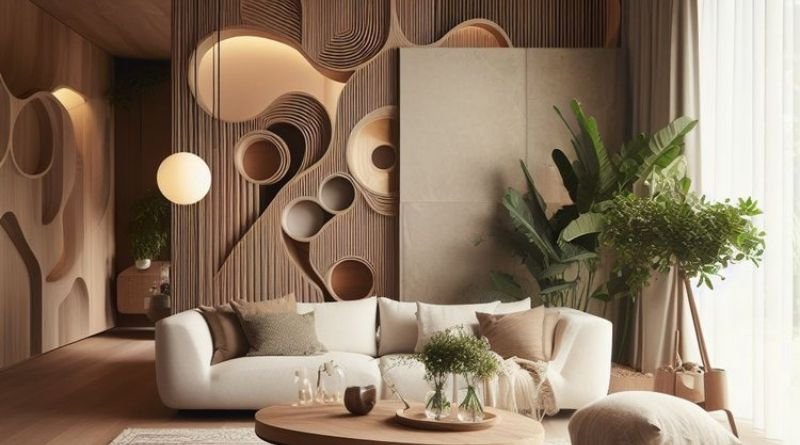Modern interior design is celebrated for its clean lines, minimalism, and functionality. Rooted in the early to mid-20th century, modern design emphasizes simplicity, efficiency, and a connection to the natural world. Here are the ten essential elements that define modern interior design and help create a space that feels both stylish and functional.
1. Clean Lines
One of the hallmark features of modern design is its use of clean, straight lines. Furniture, architectural details, and decor items typically feature sleek, unadorned edges. This emphasis on clean lines helps create an uncluttered and organized space, contributing to the overall sense of simplicity and order.
Key Points:
- Straight, angular lines
- Minimal ornamentation
- Focus on geometry
2. Neutral Color Palette
Modern interiors often use a neutral color palette, including shades of white, gray, beige, and black. These colors provide a timeless and versatile backdrop that allows other elements to stand out. The use of neutrals also helps to create a calm and cohesive environment.
Key Points:
- White, gray, beige, and black tones
- Monochromatic or tonal color schemes
- Accents in bolder colors used sparingly
3. Functional Furniture
Functionality is a core principle of modern design. Furniture pieces are selected not only for their aesthetic appeal but also for their practicality. This often means choosing pieces that are multi-functional, such as storage-integrated sofas or extendable dining tables.
Key Points:
- Multi-functional and space-saving designs
- Simple, streamlined forms
- Emphasis on comfort and utility
4. Open Space Layout
Modern design favors open, airy spaces over closed, compartmentalized rooms. Open layouts enhance the flow of natural light and create a sense of spaciousness. This design approach often includes removing unnecessary walls and opting for large, open-plan living areas.
Key Points:
- Open floor plans
- Minimal use of partitions and barriers
- Maximized natural light
5. Natural Materials
Incorporating natural materials is a key element of modern design. Materials such as wood, stone, and leather add warmth and texture to otherwise minimalist spaces. These materials also create a connection to the natural world and contribute to a sense of balance.
Key Points:
- Use of wood, stone, and leather
- Natural textures and finishes
- Integration of nature into the design
6. Minimalist Decor
Modern design eschews excessive decor in favor of minimalist aesthetics. This means selecting a few carefully chosen decorative items rather than cluttering the space with numerous knick-knacks. The focus is on quality and purpose rather than quantity.
Key Points:
- Few, carefully chosen decor items
- Emphasis on quality over quantity
- Simple, elegant accessories
7. Innovative Lighting
Lighting in modern interiors often combines functionality with style. This includes the use of both natural and artificial light sources. Modern designs frequently feature sleek, contemporary light fixtures, such as pendant lights or track lighting, which complement the overall aesthetic.
Key Points:
- Combination of natural and artificial lighting
- Sleek, contemporary light fixtures
- Focus on both form and function
8. Textural Contrast
While modern design favors simplicity, it also embraces textural contrast to add depth and interest. Mixing materials like smooth glass with rough stone or soft textiles with hard metals creates a dynamic visual experience without overwhelming the space.
Key Points:
- Contrast between different textures
- Combination of materials like glass, stone, and metal
- Subtle yet effective textural variations
9. Architectural Details
Modern design often incorporates architectural details that enhance the structure of the space. This can include exposed beams, large windows, or distinctive ceiling designs. These elements contribute to the overall aesthetic and help define the character of the room.
Key Points:
- Exposed structural elements
- Large, functional windows
- Unique ceiling designs
10. Personal Touches
Although modern design emphasizes minimalism, it also allows for personal expression. Incorporating a few personal items, such as artwork, books, or unique accessories, adds character and warmth to the space while maintaining the overall clean and uncluttered look.
Key Points:
- Personal artwork or accessories
- Thoughtful inclusion of personal items
- Balancing individuality with minimalism
FAQs
Q: How can I incorporate modern design elements into a small space?
A: Utilize multi-functional furniture, opt for a neutral color palette to enhance the sense of space, and focus on clean lines to avoid visual clutter. Mirrors and light-colored materials can also help create an illusion of a larger space.
Q: What are some budget-friendly ways to achieve a modern look?
A: Look for affordable versions of modern furniture, use DIY projects to create custom decor items, and shop at second-hand stores for quality pieces. Focus on key elements like clean lines and neutral colors to achieve the modern aesthetic on a budget.
Q: How can I add warmth to a modern design?
A: Incorporate natural materials such as wood or leather, add textured elements like cozy rugs or throws, and use warm lighting. Personal touches and carefully chosen decor items can also contribute to a more inviting atmosphere.
Q: Is modern design suitable for all types of homes?
A: Modern design can be adapted to various types of homes, including apartments, houses, and lofts. The key is to tailor the elements to fit the space and architecture of the home, ensuring that the design remains cohesive and functional.
By understanding and applying these essential elements, you can create a modern interior design that reflects simplicity, functionality, and timeless appeal.
